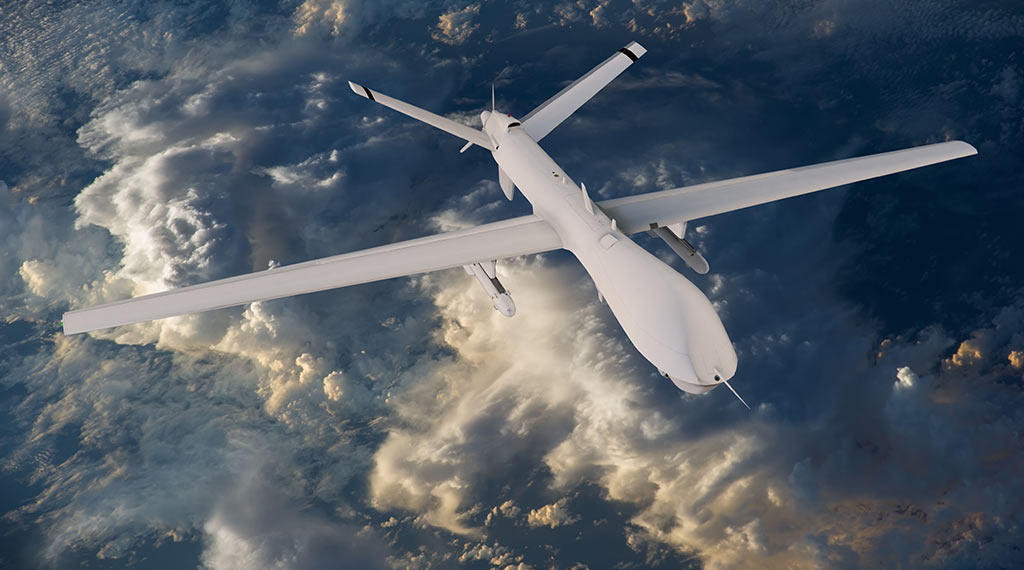
The Islamic Republic of Iran’s drone arsenal has emerged as an increasingly lethal enterprise for the Iranian Revolutionary Guard Corps (IRGC). While the regime has prioritized the expansion and development of its ballistic missile program in recent years, additional focus has been placed on its drone development. Its steady production of advanced drones is equally menacing.
Iranian Drone Evolution
Iran’s unmanned aerial systems (UAV) program initially took off in the mid-80s. The IRGC now sports larger, more sophisticated, and lethal drones in its arsenal. Iran’s proxies across the regime, including the Houthi rebels in Yemen, Iranian-backed Popular Mobilization Forces (PMF) in Iraq, and Hezbollah militants in Lebanon reportedly receive a constant supply of these increasingly dangerous weapons. Iran’s weak conventional air power coupled with its ambition of regional dominance has led the rogue state to include drones in its offensive strategy.
Grounding Iran’s Drones
Earlier this month, the U.S. House of Representatives voted to pass the Stop Iranian Drones Act. The bill dictates that “It shall be the policy of the United States to prevent Iran and Iranian-aligned terrorist and militia groups from acquiring unmanned aerial vehicles, including commercially available component parts, that can be used in attacks against United States persons and partner nations.” This rhetoric follows nearly two years of Iranian-backed drone attacks targeting U.S. assets in Iraq and Syria. Umbrella members of the PMF, including Kataib Hezbollah, have claimed responsibility for carrying out dozens of drone and rocket attacks launched at Baghdad’s Fortified Green Zone since 2020. Home to the U.S. embassy and other diplomatic assets, the Green Zone has borne the brunt of Iran’s retaliatory strikes for the U.S.-led assassination of revered IRGC commander Gen. Qassem Soleimani.
Last summer, the U.S. Central Command General Kenneth McKenzie disclaimed in a briefing that Iran’s recent turn to sophisticated drone use has led to a lethal escalation in the Middle East. The then-Command General was referring to Iran’s arsenal of explosive-laden drones. A few months earlier, Gen. McKenzie testified before the Senate Armed Services Committee that Iran’s advanced drones “present a new and complex threat to our forces and those of our partners and allies. For the first time since the Korean War, we are operating without complete air superiority. Until we are able to develop and field a networked capability to detect and defeat [UAVs], the advantage will remain with the attacker.”
While some of Iran’s drones have been weaponized, the IRGC also uses its arsenal to operate intelligence, surveillance, and reconnaissance missions. Iranian drones are equipped with more fuel and use satellite navigation, making them lethal weapons for militias in the region. Additionally, these advanced drones can reach almost any target in the Middle East. The Shed-149 and Frotos are two of Iran’s drones that have a longer-range operational radius of approximately 500km. Other drones in the regime’s arsenal can carry miniature guided bombs.
While world leaders focus on the dangers Iran’s approaching nuclear breakout time poses, the regime’s advanced and growing drone arsenal should not be dismissed. Iran’s steady development of drone technology supplements its ballistic missile program, simplifying the regime’s ability to reach its adversaries in the region.
- US Stands Up New Drone Strike Force in the Middle East - December 9, 2025
- Has Russia Finally Sold its Su-35s to Iran? - December 2, 2025
- Iran’s Growing Missile Arsenal Is a Challenge for Israel - November 18, 2025
